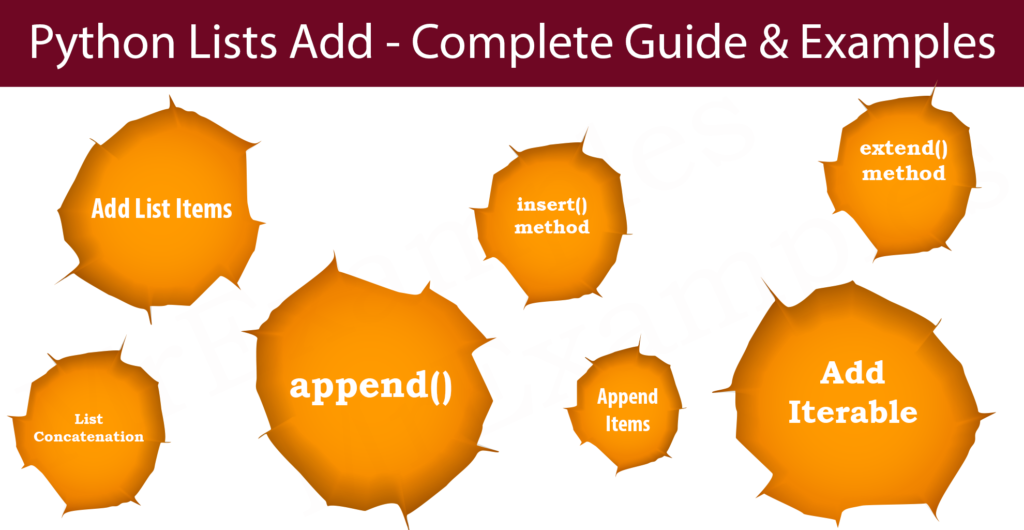Python Lists – Add List Items
We are researching Python add lists. The purpose of this post is to provide examples to satisfy the demand for knowledge.

Append Items
Use the append() method to add an item to the end of the list:
To append an item, use the append() method:
Example
Insert Items
List items can be inserted using the insert() method at a specific index.
There are two parameters to the insert() method:
- index – The index at which the element should be inserted.
- element – The element to be inserted into the list is this.
A Python lists item is inserted at the index specified by the insert() method:
In the sixth position, insert the following item:
Example
According to the examples above, the lists will now contain 11 items.
Python Lists Add – List Concatenation
The + operator can be used to concatenate multiple lists. The original lists will remain unchanged, and a new one will be created.
Example: In this example, the list of num1 was added to the end of the list of num2.
Extend List
Python lists add allows you to append elements from another list to the current list using the extend() method.
To the country list, add the items from the country list1:
Example
The user will include the items at the very end of the list.
Add Iterable
You can add any iterable object to a list with the Python lists add extend() method, including tuples, sets, dictionaries, and more.
Add a tuple’s components to a list:
Example
| append() | The append() method appends the element to the end of the list. |
| insert() | Adds an element before the specified index using insert(). |
| extend() | Appends elements from the iterable to the list using extend(). |
Python Lists Usage in Industry
Here are some examples of how lists are utilized in different industries:
- Python is a popular language for data analysis and data science, and lists are commonly employed to store and manipulate data. Data scientists use lists to hold datasets, perform data preprocessing, and apply various statistical operations. Lists are often used to store sequences of data points, such as time series data or experimental results, allowing for efficient data analysis and visualization.
- Lists are extensively used in web development with Python. Web frameworks like Django and Flask utilize lists to handle request and response data, manage routing and URLs, and manipulate data structures for rendering web pages. Lists can store data retrieved from databases, user inputs, or API responses, enabling efficient data processing and rendering of dynamic web content.
- Lists play a crucial role in software development projects. They are used to manage and manipulate collections of data, store program configurations, manage user inputs and outputs, and organize data structures. Lists can hold objects of various types, allowing for flexible data representation and manipulation.
- Python is employed in the finance industry for tasks such as portfolio management, risk assessment, and algorithmic trading. Lists are commonly used to store financial data, such as stock prices, transaction records, or portfolio holdings. They enable data manipulation, analysis, and the implementation of financial models and algorithms.
- In NLP applications, lists are employed to handle and manipulate text data. Text documents can be stored as lists of strings, where each string represents a document or a sentence. Lists allow for preprocessing steps like tokenization, stemming, and stop-word removal. They also enable the creation of frequency distributions, language models, and other NLP-specific data structures.
- Lists are widely used in bioinformatics for storing and manipulating biological data, such as DNA or protein sequences. Lists allow for the efficient representation and analysis of biological sequences, alignment results, and genomic data. They facilitate the development of algorithms and tools for sequence analysis, phylogenetics, and genomics research.
- Python’s popularity in the field of machine learning relies on lists for data storage and manipulation. Lists are used to hold training datasets, feature vectors, and labels. They allow for data preprocessing, feature engineering, and the construction of input matrices for machine learning algorithms.
